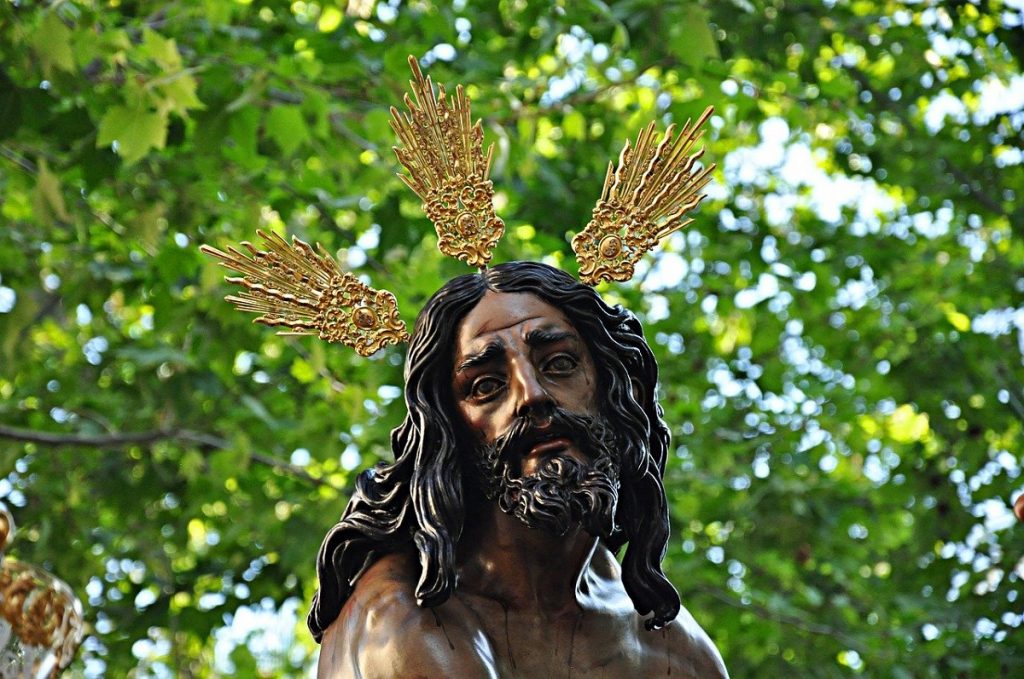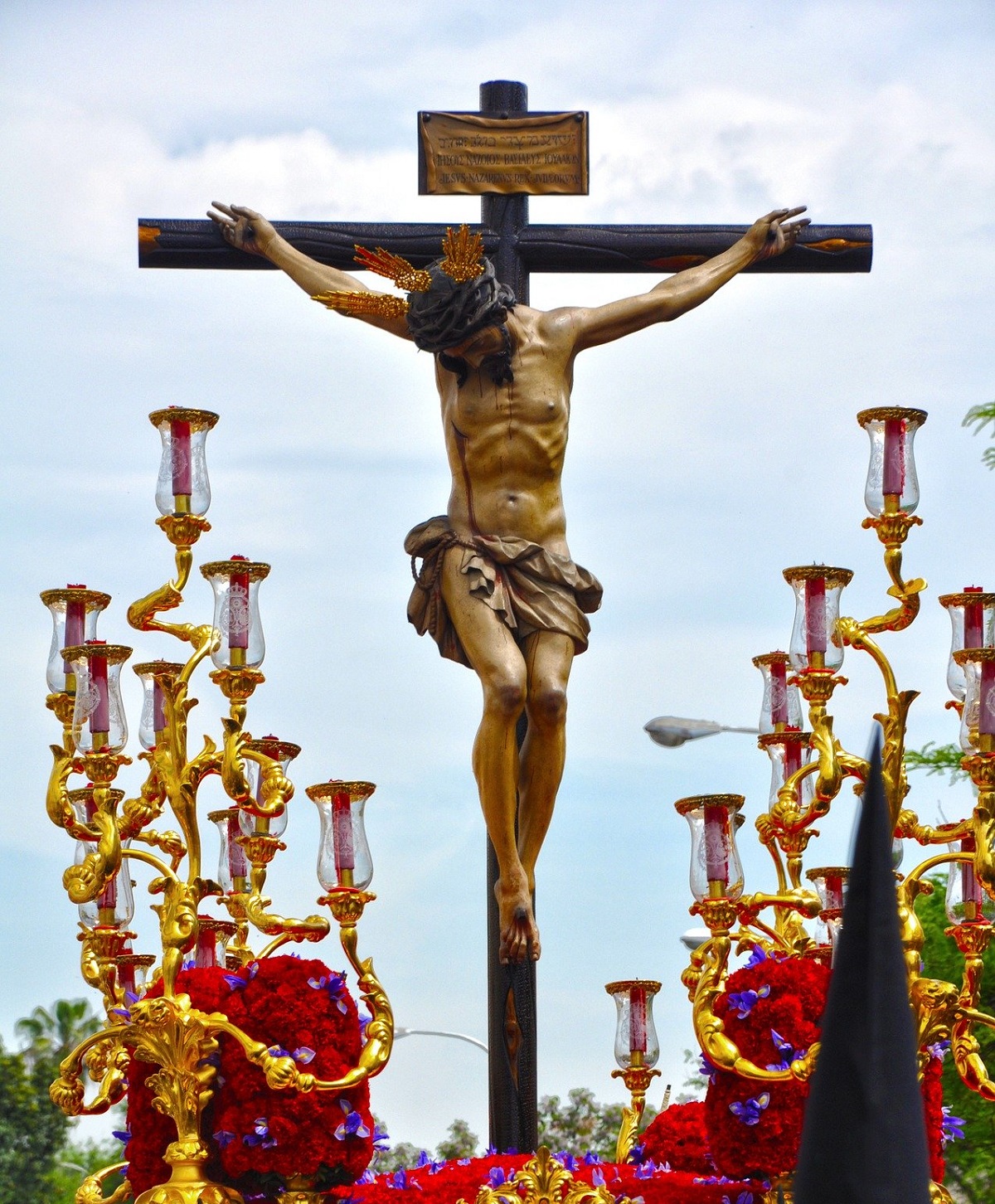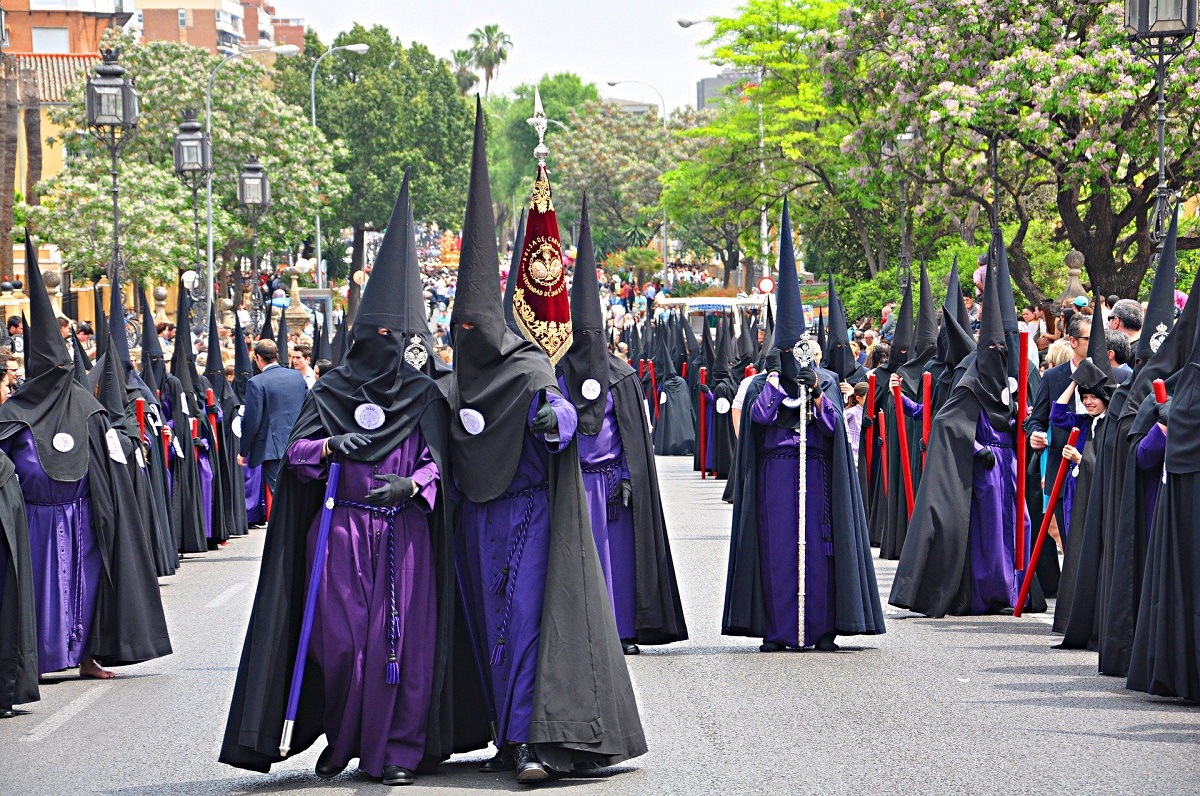
Seville is a city of great cultural wealth, a value that makes it one of the most attractive destinations for thousands of people from all over the world. It is the birthplace of flamenco, it has a wide monumental heritage, it has a rich gastronomy and its festivals are a world reference. Holy Week in Seville is an example of this.
The aesthetic value of these Sevillian religious festivals has drawn the attention of locals and strangers for centuries. The fame of this celebration, declared a Festival of International Tourist Interest in 1980, is not recent, but back in the 16th century it already had recognition abroad, at which time most of the current brotherhoods were created.
What is commemorated each year is the Passion of Christ, days in which the city of Seville is transformed. It is filled with thousands of visitors interested in knowing how this particular party is. Because although Seville’s Holy Week is a religious event, it is also a party that is lived with intensity.
Day-to-day rhythms are altered. The appearance of the city changes. Nazarenes, costaleros, penitents, acolytes and numerous confreres flood the streets to accompany and enjoy the more than seventy brotherhoods that make penance season during this special week in Seville. A few days to live and feel in the city of Guadalquivir.
Unfortunately, this year the health crisis caused by the Covid-19 will deprive us of enjoying these processions, whose origin dates back to the late sixteenth and early seventeenth centuries.
 Apparently, the origin of Seville’s Holy Week is directly related to the birth of the brotherhoods.
Apparently, the origin of Seville’s Holy Week is directly related to the birth of the brotherhoods.
There are even historical documents that demonstrate the existence of brotherhoods in Seville since the 13th century, as groups of faithful who lived religiously, discreetly, inside temples and convents.
Everything seems to indicate that the first Holy Week procession in Seville began with the Stations of the Cross at the Cruz del Campo, a custom established by the Marquis of Tarifa, Fadrique Enríquez de Ribera. In 1521 he came to the city from Jerusalem.
Apparently, he was so surprised by the twelve-station Way of the Cross that was held in the Holy Land, that he decided to do it in Seville on the first Friday of March.
The journey began at his residence, the Casa de Pilatos, and reached the Cruz del Campo. This route symbolized the 997 meters that Jesus walked from Pilate’s Praetorium to Golgotha, where he was crucified.
This Way of the Cross became popular in Seville and began to be repeated every year on the first Friday in March.
The first delegations did not process images, but carried only a parish cross and the priest a crucifix. It was in the middle of the 16th century, when the Council of Trent recommended taking steps to the street to reach more faithful, at which time the brotherhoods began to carry their images.
It was in 1604 when Cardinal Fernando Niño de Guevara ordered the brotherhoods to attend the Cathedral to make a Station of Penance and the brotherhoods of the Triana neighborhood to do it in the Greater Parish of Santa Ana, given the difficulties that had to cross the Guadalquivir river. Until 1873, the brotherhoods continued to process to the Cruz del Campo.
This is how the currently called “official race” was born, a common transit for all the brotherhoods, with which the processions were regulated and, in addition, the festival and popular devotion were institutionalized. In this way, the Sevillian brotherhoods were divided into penitential or light. The former could also be blood or discipline, and the objective was to promote worship and contemplation of the passion of Christ.
During the 19th century, Holy Week in Seville suffered several setbacks that affected its development, such as the French invasion, the confiscation of Mendizábal or the Revolution of 1868, among others. But it was the Infanta Luisa Fernanda de Borbón who gave it an important boost and the Bourbon restoration favored the emergence of new brotherhoods, turning Easter in Seville into a tourist attraction, which is still alive today.

Like everything, Holy Week in Seville has an endless number of anecdotes and curiosities, among which we highlight the following data on the origins of some of the most popular Brotherhoods in Seville:
The Brotherhood of Silence or Primitive Brotherhood of the Nazarenes of Seville is perhaps the oldest and was founded in 1340, although oral tradition places its birth a little later in 1355.
The Hiniesta Brotherhood, re-founded in 1879, after two centuries without life, comes from another brotherhood that already existed in the XV century.
The Sacramental Brotherhood of Esperanza of Triana is a pioneer in the Triana neighborhood and one of the oldest in Seville. In 1418 it was founded as a brotherhood of light with the title of Hope, established in the Royal Parish of Señora Santa Ana and related to the potters’ guild. In the historical documents of this Brotherhood, he says that in 1542 he merged with another corporation, called San Juan Evangelista, from the fishermen’s guild.
The origin of the brotherhood popularly known as “Los Negritos” is linked to the Hospital of Our Lady of the Kings, founded by Archbishop Don Gonzalo de Mena y Roelas in 1393.
The Brotherhood of the Gran Poder, one of the best known and most popular of Seville’s Holy Week, was founded in 1431, under the title Brotherhood of Power and Transfer of Our Lady and Honor of Saint John the Baptist, figured as a brotherhood of light in the Convent of Santo Dominog de Silos of the order of San Benito. Its foundation is linked to the protectorate of the Duchy of Medina Sidonia.
The Valle is formed by the merger of two brotherhoods from medieval Seville: that of the Santa Faz, founded in 1450, and that of the Coronation of Christ, founded in 1540.
Everything indicates that Montesión has its origin in a group of disciplinarians, gathered around a Crucified in the 14th century, who settled in the Santa Paula monastery at the end of the 15th century, where the Crucified is currently found, under the name of the Coral .
San Benito was reorganized in 1921 and comes from another brotherhood that owned a Hospital in the early sixteenth century in Triana.
The Brotherhood of the Quinta Angustia was formed in the year 1500 in the convent of Carmen, although its first rules are from 1541.
The Brotherhood of Christ of Burgos, although its rules date back to 1943, was founded in 1888, at which time the confreres of the brotherhood of Buen Fin moved to San Pedro due to problems with the Franciscan community. Not being able to take the images, they took the one of another brotherhood that existed in the 16th century, known as “that of the students”.
The Brotherhood of Santo Crucifijo and Nuestra Señora de Gracia, from the convent of San Agustín, disappeared at the end of the 19th century and its Christ was lost in the fire of 1936, but it was made a reproduction and today, it is the owner of the brotherhood of San Roque.
Holy Week in Seville is a celebration that is lived intensely on the street. The processions begin in the afternoon and end at dawn filling the city with religious images, passion and the smell of incense. We will miss it this year, we will experience it as more intensity next year.
© 2024 El Palacio Andaluz. All rights reserved.